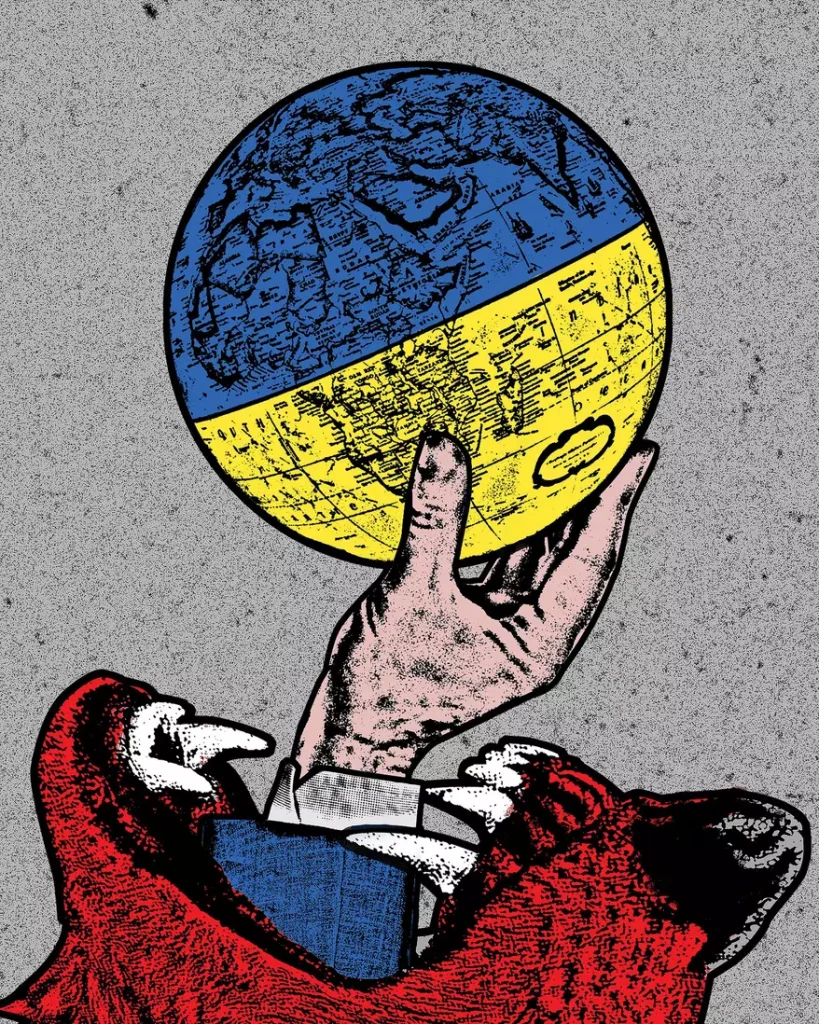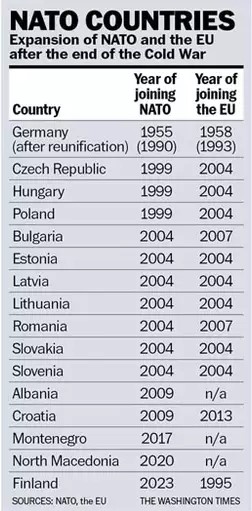Why did Vladimir Putin’s Russia invade Ukraine? Ukraine posed no threat to Russia, and it was smaller and poorer. The Russians and Ukrainians shared some history, ethnic background and religion. Many Ukrainians used Russian as a first or second language. To the extent that Russia wanted Ukrainian wheat or coal, it would have been much cheaper to buy them rather than wage war. Was there anything that the U.S. and Europeans could have done differently when socialism crashed in Central and Eastern Europe and the Soviet Union broke up in the 1989-91 period that would have likely prevented the Ukraine war?
About half of Ukraine, like Poland, has been part of Russia off and on over the last few hundred years. The Europeans had engaged in countless wars over territory from the beginning of recorded time. At the end of World War I, the map of Europe was redrawn to give most Europeans a “homeland” to end wars over territory. The Germans and some others felt shortchanged, and once they had the chance to rebuild their armies, Hitler took them to war to conquer Europe — which did not work out terribly well for the Germans.
So once again, after World War II, the victorious allies redrew the map of Europe. Poland was moved west to punish the Germans and to make Stalin happy. Ukraine, home to the largest tank battles of the war, was once again forced to be part of the Soviet Union. Soviet dictator Nikita Khrushchev “gave” the Crimean Peninsula to Ukraine in 1954 as a goodwill gesture.
With the fall and breakup of the Soviet Union in 1991, Ukraine, along with Russia, was left as an independent nuclear country. The Ukrainians were broke and thus agreed in 1994 to give up their nuclear weapons in exchange for a large payment from the U.S. and others and security guarantees. The borders of Ukraine were guaranteed by Russia, the United Kingdom and the U.S. as part of the Budapest Memorandum of 1994.
When communist Central and Eastern Europe started breaking up in 1989, there was no plan from the Bush administration or the European leaders regarding what to do. Although there was active covert support for the democratic forces in the “captive nations” during the Reagan administration, the collapse of communism caught most governments by surprise.
Unlike at the end of WWII, there was no formal surrender by the Soviet Union and the leaders of the Central and Eastern European countries. In essence, the communist leaders just walked away from the disasters they had caused, turning the keys over to the new democratic forces with the hope they would not be shot.
Western governments and nongovernmental organizations rushed in with largely uncoordinated advice and aid. The absence of a master plan for Central and Eastern Europe actually worked out rather well. Those of us on the ground with some experience would see particular needs and do our best to fill them. I served as co-chairman of the Bulgarian economic reform and transaction group in 1990 and, working with the Bulgarian and U.S. governments, was given an almost free hand in determining what experts and resources were needed. U.S. businesses, law firms, think tanks and others volunteered and often paid for their own expert personnel to support our efforts. Even the U.S. Agency for International Development dropped many of its normal paperwork requirements, enabling us to move very quickly in taking care of staff and transportation expenses.
The result is that all of the former communist countries in Central and Eastern Europe, including the Baltics, which were part of the Soviet Union, are now functioning free-market democracies with rising per capita incomes. Most have become members of the European Union, fully integrating their economies with Western Europe.
After the fall of the Soviet Union, it might have been possible to also set a course for Russia, Belarus and Ukraine to become part of the EU, with full economic integration. If that had happened, which would have been a very heavy lift, there would be no use for NATO in at least its present form, and that tension would be gone. Russia’s actions in Ukraine can be at least partially explained by its fear of invasion from the West by playing on what now seems an irrational fear based on the history of invasions from the Swedes, the French (Napoleon burned Moscow) and the British, as well as successive German invasions. Remember, the EU got its start by the forming of the European Coal and Steel Community in 1951 as a way of integrating the European industrial economies so they could no longer wage war on one another. The Russians thought they had an agreement that NATO would not expand beyond Germany when Mikhail Gorbachev acquiesced to the former East Germany’s becoming part of Germany and hence part of the EU and NATO.
Given the lack of democratic traditions and a real market economy, as well as a high level of corruption, Russia, Belarus and Ukraine would have needed much more support, including tough love, to make the transition to full and equal European countries. But the cost to the rest of the EU, the U.S., and the rest of the world would clearly have been far less than the current mess and uncertainty.
• Richard W. Rahn is chairman of the Institute for Global Economic Growth and MCon LLC.
https://www.washingtontimes.com/news/2023/aug/21/looking-back-on-russias-war-with-ukraine-what-us-a/
© Copyright 2023 The Washington Times, LLC.

